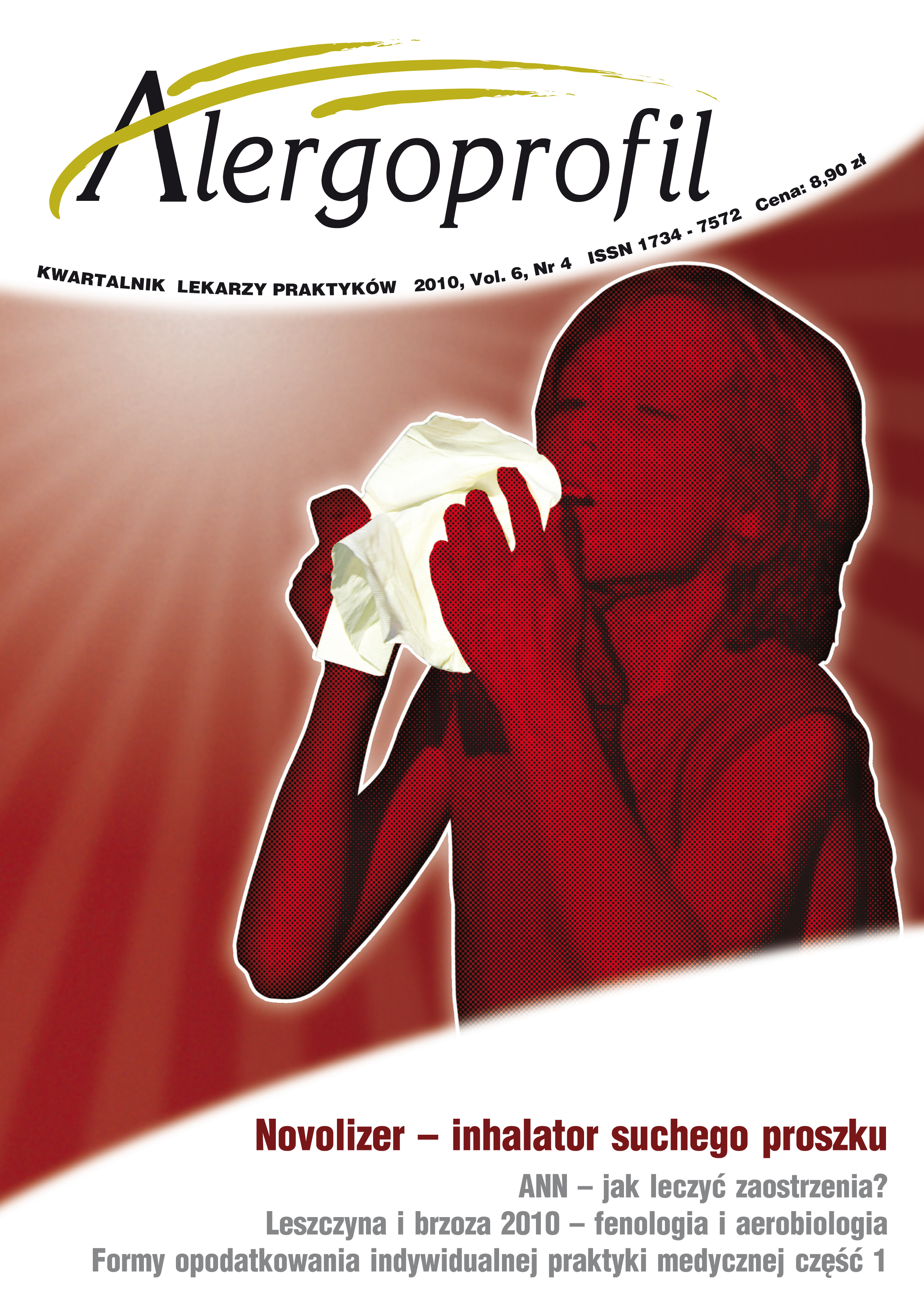Allergic rhinitis – how to cure the exacerbation
Main Article Content
Abstract
Allergic rhinitis is one of the most prevalent medical conditions. The goal of management is to achieve optimal symptom control. Therapy of allergic rhinitis includes allergen avoidance, pharmacotherapy and immunotherapy. The basis of allergic rhinitis treatment is the reduction of the contact of nasal mucosa with allergens. Antihistamines and intranasal corticosteroids are widely recognised as the most effective pharmacotherapy for allergic rhinitis, in adults and children. Guidelines that are available do not take into consideration the specificity of treatment in allergic rhinitis exacerbation. The author puts emphasis on the measures that enhance therapeutic effect of medication.
Downloads
Article Details
Copyright: © Medical Education sp. z o.o. This is an Open Access article distributed under the terms of the Attribution-NonCommercial 4.0 International (CC BY-NC 4.0). License (https://creativecommons.org/licenses/by-nc/4.0/), allowing third parties to copy and redistribute the material in any medium or format and to remix, transform, and build upon the material, provided the original work is properly cited and states its license.
Address reprint requests to: Medical Education, Marcin Kuźma (marcin.kuzma@mededu.pl)
References
2. Rapiejko P., Lipiec A., Wojdas A., Modrzyński M., Kantor I., Jurkiewicz D.: Jakość życia u chorych z alergicznym nieżytem nosa – doniesienie wstępne. Ann. Universit. Marie Curie-Skłodowskiej Sectio D Medicina 2004, 59(Suppl. XIV, 382): 1-5.
3. Brozek J.L. et al.: Allergic Rhinitis and its impact on asthma (ARIA) guidelines: 2010 revision. J. Allergy Clin. Immunol. 2010, 126: 466-476.
4. Friedlaender H.M., Harris J., LaVallee N., Russell H., Shilstone J.: Evaluation of the Onset and Duration of Effects of Azelastine Eye Drops (0,05%) versus placebo in patients with allergic conjunctivitis using an allergen challenge model. Ophthalmology 2010, 107(12): 2152-7
5. Rapiejko P., Jurkiewicz D.: Wpływ stosowania roztworu izotonicznego wody morskiej (Marimer) na objawy chorobowe oraz stan błony śluzowej nosa u chorych z uczuleniem na alergeny pyłku roślin. Alergoprofil 2007, 3(4): 29-35.

